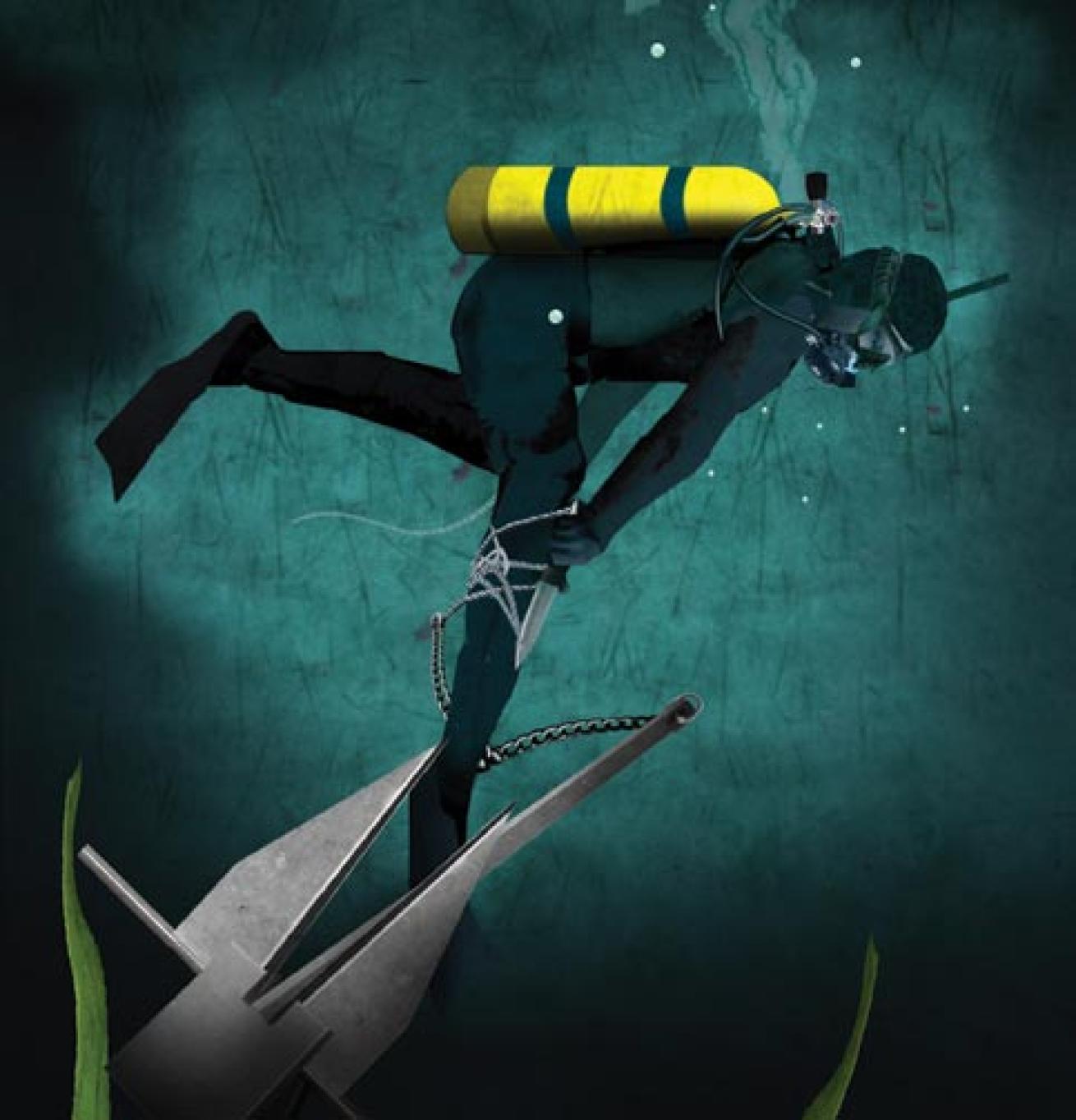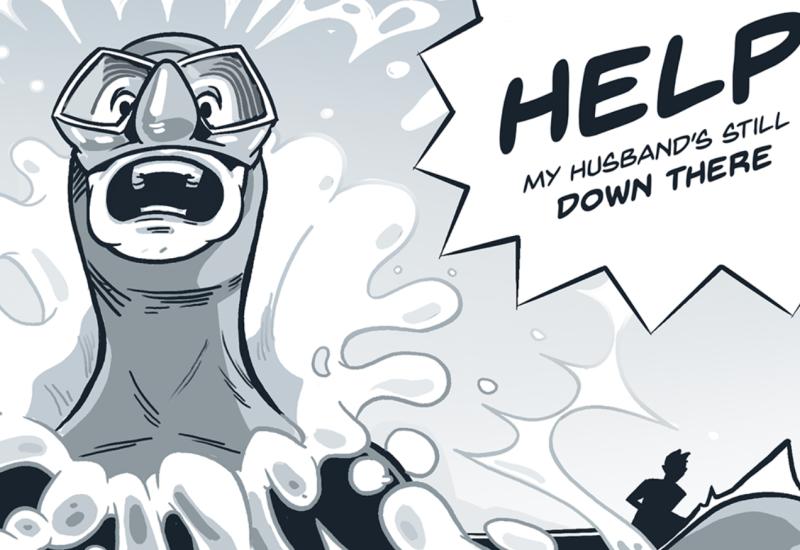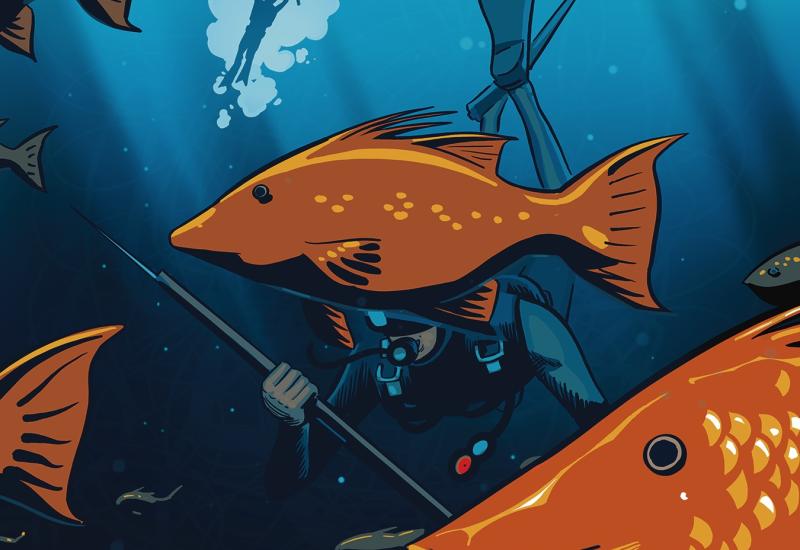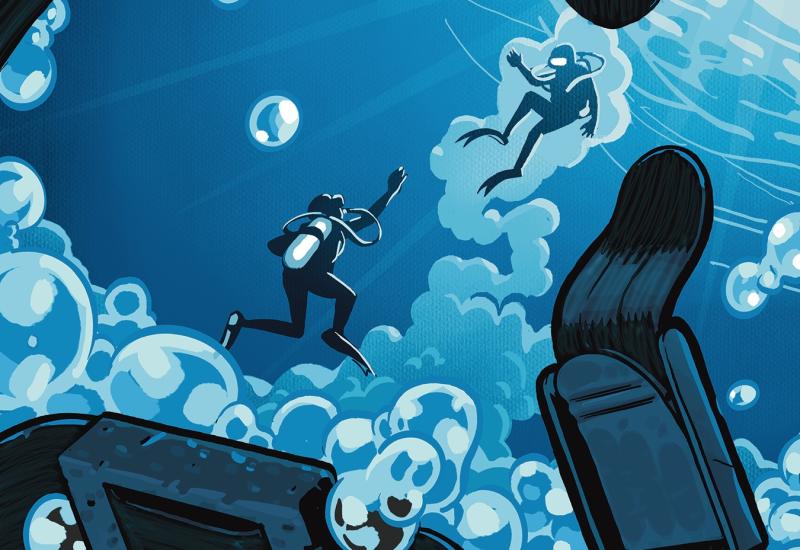Lessons for Life: Weighed Down

Lessons for Life: Weighed Down
Michael Morgenstern
Weighed Down
A Quick Salvage Mission Turns Deadly
Just about every boater on the lake dropped anchor near the dam at one time or another. It was a beautiful spot and offered a perfect place to swim and relax in the sun, away from the boat traffic. The rocky covering of the dam often snagged those same anchors, though, making them nearly impossible to release. After fighting to pull up their anchors, most boaters finally cut them loose. And that was where Matt and Jake came in. The two divers considered it their personal gold mine to recover lost anchors to sell later at the marina. It all worked well and paid for the pair’s diving — right up until things fell apart.
The Divers
Matt and Jake both worked around the lake marina, servicing boats and taking care of the slips. They were experienced divers, having made hundreds of dives in the lake, but neither had any additional training beyond his initial certification. The two dived mostly to clean boat hulls or check on the floats that keep the docks on the surface. Their equipment got regular use, but rarely saw any serious maintenance.
Whenever a boater would come in and report that he’d cut loose an anchor, the pair would sympathize yet smile inwardly; they knew it was a chance to make a little extra cash. Under normal circumstances, they would return later that week to search the dam and recover the anchor. Usually, they sold them on the dock for one-third the cost of a new anchor — earning them $30 to $50 for an hour or two of work. When the owner of an expensive cruiser reported he’d lost a particularly expensive anchor, Jake offered to recover it for him directly, for a fee.
The Dive
Rather than come back the next day to make the search-and-recovery dive, Matt and Jake went out to look for the missing anchor later that same day. The boater was leaving the lake the next day, and they needed to recover it immediately or possibly miss out on the chance to earn $100. The sun was already beginning to set when they approached the area of the dam the boat owner described. They tossed in their own anchor, confident they could bring it up if it too got entangled.
The pair hastily assembled their dive gear and back-rolled into the water to begin their search. Descending through the quickly darkening lake water, they reached the bottom around 80 feet down. The two had made this dive many times before, and always started by swimming back and forth across the face of the dam, slowly making their way shallower.
The Accident
During the dive, Jake noticed Matt was struggling with his buoyancy: He kept sinking and then adding more air into his BC, rising up only to sink again a minute later. Finally, Jake signaled for Matt to stop, and then he looked at his buddy’s gear. There was a small hole in the air bladder that spilled out air every time Matt hit the inflator. Jake signaled to Matt to ascend, but Matt shook him off. He wanted to keep searching, so they continued.
Matt depleted his air supply faster than usual due to his equipment troubles. He also reported later that his tank wasn’t full when he began the dive. Just as the pair found the missing anchor, Matt realized he was low on air. He signaled to Jake that they should ascend together. Jake waved goodbye to his buddy and gestured that he was going to bring up the anchor alone. Matt agreed and headed for the surface, about 60 feet away. Matt made it to the boat just before he ran out of air.
Normally, the pair would work together and carry the anchor to the surface, using the extra lift from their BCs. This anchor was larger than most they had recovered, weighing approximately 25 pounds and connected to at least 100 feet of half-inch nylon line with 5 feet of chain at the bottom. Matt wasn’t sure how Jake planned to bring it up on his own.
Matt climbed into the boat and took off his gear. He nervously watched his friend’s bubbles over the side — until they stopped rising. They hadn’t brought extra tanks along, so there was no way for Matt to return to the bottom to help his friend. He was able to call in on a radio, but it took half an hour for other divers in the area to respond and reach the dive site. By then, it was much too late — rescuers found Jake wrapped in the anchor line floating about 15 feet below the surface.
Analysis
Investigators later concluded that Jake had attempted to carry the anchor to the surface, bundling up the anchor, the anchor chain and the nylon anchor line in his arms. He had fully inflated his BC and began struggling as he ascended. The additional weight from the anchor exceeded the maximum available lift on his BC, so he would’ve been negatively buoyant and was fighting to swim up.
Halfway to the surface, Jake lost his grip on the anchor and dropped it back to the bottom. This would have caused a dangerous buoyant ascent, except the anchor line was found tangled in his gear and wrapped around his leg. Suddenly, Jake was extremely positively buoyant and tangled at the end of a line, unable to free himself. He was tied down by the weight of the anchor, but floating in the middle of the water column.
There were signs that Jake had attempted to cut through the line holding him down, but he never came close to severing the line before he dropped the knife. It was found on the bottom near the anchor. He had unbuckled his BC halfway, but was unable to shed his gear before he drowned.
Lessons for Life
1. Stay with your buddy. If you plan to dive as a buddy team, you should dive as a buddy team: When one buddy calls the dive and heads for the surface, you should ascend together.
2. Prepare for a dive properly. This includes inspecting your equipment to make sure it’s in good working order and that you have enough breathing gas in your cylinder to do the job you plan to accomplish — whether it’s retrieving an anchor or simply going for a recreational dive.
3. Don’t attempt to lift heavy objects with just any equipment. Seek training in lift techniques and use a dedicated lift bag separate from your own equipment.
Eric Douglas co-authored the book Scuba Diving Safety, and has written a series of dive-adventure novels and short stories. Check out his website at www.booksbyeric.com.

Michael Morgenstern
Weighed Down
A Quick Salvage Mission Turns Deadly
Just about every boater on the lake dropped anchor near the dam at one time or another. It was a beautiful spot and offered a perfect place to swim and relax in the sun, away from the boat traffic. The rocky covering of the dam often snagged those same anchors, though, making them nearly impossible to release. After fighting to pull up their anchors, most boaters finally cut them loose. And that was where Matt and Jake came in. The two divers considered it their personal gold mine to recover lost anchors to sell later at the marina. It all worked well and paid for the pair’s diving — right up until things fell apart.
The Divers
Matt and Jake both worked around the lake marina, servicing boats and taking care of the slips. They were experienced divers, having made hundreds of dives in the lake, but neither had any additional training beyond his initial certification. The two dived mostly to clean boat hulls or check on the floats that keep the docks on the surface. Their equipment got regular use, but rarely saw any serious maintenance.
Whenever a boater would come in and report that he’d cut loose an anchor, the pair would sympathize yet smile inwardly; they knew it was a chance to make a little extra cash. Under normal circumstances, they would return later that week to search the dam and recover the anchor. Usually, they sold them on the dock for one-third the cost of a new anchor — earning them $30 to $50 for an hour or two of work. When the owner of an expensive cruiser reported he’d lost a particularly expensive anchor, Jake offered to recover it for him directly, for a fee.
The Dive
Rather than come back the next day to make the search-and-recovery dive, Matt and Jake went out to look for the missing anchor later that same day. The boater was leaving the lake the next day, and they needed to recover it immediately or possibly miss out on the chance to earn $100. The sun was already beginning to set when they approached the area of the dam the boat owner described. They tossed in their own anchor, confident they could bring it up if it too got entangled.
The pair hastily assembled their dive gear and back-rolled into the water to begin their search. Descending through the quickly darkening lake water, they reached the bottom around 80 feet down. The two had made this dive many times before, and always started by swimming back and forth across the face of the dam, slowly making their way shallower.
The Accident
During the dive, Jake noticed Matt was struggling with his buoyancy: He kept sinking and then adding more air into his BC, rising up only to sink again a minute later. Finally, Jake signaled for Matt to stop, and then he looked at his buddy’s gear. There was a small hole in the air bladder that spilled out air every time Matt hit the inflator. Jake signaled to Matt to ascend, but Matt shook him off. He wanted to keep searching, so they continued.
Matt depleted his air supply faster than usual due to his equipment troubles. He also reported later that his tank wasn’t full when he began the dive. Just as the pair found the missing anchor, Matt realized he was low on air. He signaled to Jake that they should ascend together. Jake waved goodbye to his buddy and gestured that he was going to bring up the anchor alone. Matt agreed and headed for the surface, about 60 feet away. Matt made it to the boat just before he ran out of air.
Normally, the pair would work together and carry the anchor to the surface, using the extra lift from their BCs. This anchor was larger than most they had recovered, weighing approximately 25 pounds and connected to at least 100 feet of half-inch nylon line with 5 feet of chain at the bottom. Matt wasn’t sure how Jake planned to bring it up on his own.
Matt climbed into the boat and took off his gear. He nervously watched his friend’s bubbles over the side — until they stopped rising. They hadn’t brought extra tanks along, so there was no way for Matt to return to the bottom to help his friend. He was able to call in on a radio, but it took half an hour for other divers in the area to respond and reach the dive site. By then, it was much too late — rescuers found Jake wrapped in the anchor line floating about 15 feet below the surface.
Analysis
Investigators later concluded that Jake had attempted to carry the anchor to the surface, bundling up the anchor, the anchor chain and the nylon anchor line in his arms. He had fully inflated his BC and began struggling as he ascended. The additional weight from the anchor exceeded the maximum available lift on his BC, so he would’ve been negatively buoyant and was fighting to swim up.
Halfway to the surface, Jake lost his grip on the anchor and dropped it back to the bottom. This would have caused a dangerous buoyant ascent, except the anchor line was found tangled in his gear and wrapped around his leg. Suddenly, Jake was extremely positively buoyant and tangled at the end of a line, unable to free himself. He was tied down by the weight of the anchor, but floating in the middle of the water column.
There were signs that Jake had attempted to cut through the line holding him down, but he never came close to severing the line before he dropped the knife. It was found on the bottom near the anchor. He had unbuckled his BC halfway, but was unable to shed his gear before he drowned.
Lessons for Life
1. Stay with your buddy. If you plan to dive as a buddy team, you should dive as a buddy team: When one buddy calls the dive and heads for the surface, you should ascend together.
2. Prepare for a dive properly. This includes inspecting your equipment to make sure it’s in good working order and that you have enough breathing gas in your cylinder to do the job you plan to accomplish — whether it’s retrieving an anchor or simply going for a recreational dive.
3. Don’t attempt to lift heavy objects with just any equipment. Seek training in lift techniques and use a dedicated lift bag separate from your own equipment.
Eric Douglas co-authored the book Scuba Diving Safety, and has written a series of dive-adventure novels and short stories. Check out his website at www.booksbyeric.com.










